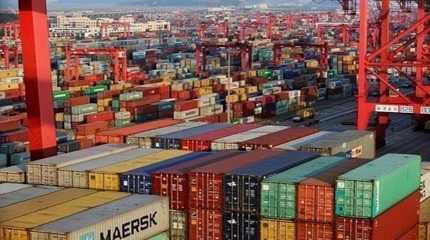
BRASILIA, July 2 (NNN-MERCOPRESS) — Trade relations between Brazil and Argentina are improving with an overall volume of US$12.5 billion in the first five months of this year. Brazil exported US$7.5 billion worth of goods and imported US$ 5 billion from Argentina, according to the Comexstat portal of the Brazilian Ministry of Industry, Commerce, and Services.
Although slightly lower than the record year of 2013, when exports reached US$ 7.7 billion, and imports US$ 7.3 billion, Brazil remained at the surplus end of the deal from January to May, with US$ 2.4 billion. Sales to Argentina have grown by 26.9% compared to the same period last year, while imports increased by 4%.
The highlight in the trade relations between the two countries this year was soy. Brazilian soy exports to Argentina have gone up in the list of Brazilian exports to its neighbor, with a share of 13%, surpassing even the automotive sector. Compared to the same period in 2022, soy sales have seen a staggering growth of 845%, totaling US$ 1.01 billion. This surge can be attributed to a plunge in Argentina’s soy harvest and its need for the commodity to fulfill sales contracts abroad.
The best year in trade history between Brazil and Argentina was in 2013, when it reached US$ 36.1 billion. Since then, such performance has not been repeated, hitting a low point of US$ 16.4 billion in 2020 due to the impact of the COVID-19 pandemic.
In 2021, the trade balance slightly favored Argentina, with exports and imports at almost US$ 12 billion each, leaving Brazil with a US$ 70 million deficit. In 2022, exports reached US$ 15.3 billion, while imports represented a cost of US$ 13.1 billion, nearly reaching the US$ 30 billion annual pattern.
The idea of establishing a mechanism through Banco do Brasil and the National Bank for Economic and Social Development (BNDES) to facilitate trade between the two countries has not been materialized yet, according to specialists. In the meantime, Brazilian exporters are adopting a strategy of securing payment for their sales due to measures implemented by the Argentine government to prevent the outflow of dollars from the country.
“The two countries’ commercial relations are declining, and two main reasons explain that: the disastrous economic situation of Argentina and Brazil’s deindustrialization and a renewed focus on primary production activities,” commented Leonardo Paz, a researcher at the Getulio Vargas Foundation, FGV, NPII international intelligence research center.
“We are a long way from how it used to be. Not only because of the imposed payment restrictions but also because the economic crisis has reduced the demand in the market,” said Antonio Sérgio, vice president of the National Association of Vehicle Manufacturers (Anfavea). Looking back in time, Argentina bought 1 million Brazilian vehicles per year in 2013. Now, the figure dropped to 400 thousand.
From January to May this year, according to Comexstat, exports of vehicle accessory parts grew by 10% and that of passenger cars by 9.8% compared to the first five months of 2022, totaling US$ 1.5 billion. Argentine imports of motor vehicles to transport goods and special uses rose 18% in five months, while the purchase of passenger cars grew by 17% to US$ 1.7 billion.




